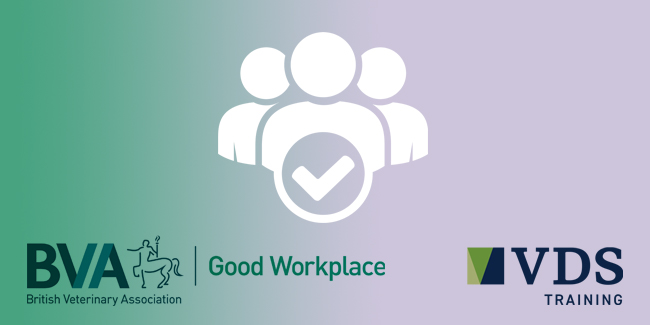
Good Veterinary Workplaces Blog - Management and HR
We all strive to work as part of a happy, motivated and engaged team, but how can we build or recover a positive working environment after a period of significant change? In the second session of our NEW Good Workplace webinar series in partnership with BVA, we identified the ways in which you can enhance your HR and Management processes to create workplaces where teams feel fulfilled. The webinars are based on the BVA Good Veterinary Workplaces policy position, which contains an entire chapter of advice and links to resources on this subject. Based on your questions from the webinar, here are our six top tips to implement a structure that remains fair and consistent It is important to create and allocate an appropriate amount of time to nurture and develop our teams (and ourselves). “But we haven’t got any free time to do this?” we can hear you say! Time allocation for HR and management often gets thrown out because clinical work takes president. Flip this on its head. If these proactive touch points don’t happen, what are the consequences? When problems are not nipped in the bud, guess what happens? They grow! Ask yourself Learn practical tools to manage your time, prioritise effectively and work smarter in our Life Hacks to Take Control of your Time workshop. Employer, employee, worker bee, director; you name it, we all need structure. It’s not one person's job to fix and implement new systems and process, it takes a team. But you can only do this with timely conversations that encourage open honest dialogue from both employees and employers. When did you last check in with your team about what’s working and what’s not? Check out the Practice Culture Survey to think about the following: Have these things in place before you need them; these structures help to hold us to account and keep us safe when issues arise. What structure should you use? There is no “one size fits all”, but the common theme is that it takes a team approach, with proactive strategies for touch points to chat, discuss, ideate, and act. Here are a few ways to check in with your team: Be objective, not subjective. Make sure to describe the situation and the behaviour, not the person, and then share the impact of their behaviour, and remember to take the emotion out and use facts - Situation, Behaviour, Impact. A BVA survey in 2018 noted that 73% of employers had advertised a job vacancy in the previous 12 months. Of those roles, only 40% were filled within three months, 50% within six months, and almost a quarter took more than six months to fill. How can you manage expectations? You don't want people to vote with their feet, so think how your processes can encourage staff retention. The number one reason someone leaves a job, is their direct line manager. That’s proof that investing in our leadership and management skills is vital, and that both are skill sets and not givens. If you're not naturally predisposed towards managing people, you can learn to do it and learn to reflect on your own practice and get better at it. Whether you manage a happy, productive team or struggle to galvanise your colleagues, our Learning to Lead course can help. Purpose, autonomy and mastery are key drivers in feeling engaged at work. We all want to know what our job entails, why we do what we do, and to have a degree of freedom and control so we can seek to develop within our roles. If you feel that you're not getting any recognition, ask for it and be specific! “How do you feel I'm getting on moment? How do you feel I'm working through the surgeries?” Ask for it, clarify what you have heard and thank them. In future sessions we’ll explore the topic of reward and recognition, but having an open structure around pay and reward always helps. For more advice and guidance, check out BVA’s Good workplace resources For specific questions, BVA members can get free advice from the BVA legal helpline To proactively identify the factors within your practice which affect team morale, wellbeing and culture, try our Practice Culture Survey 1. People take time. People deserve time
“I have found that any allocated time for meetings ends up being booked for emergency appointments!”
2. Create a structure that works for you and your team by listening to them
3. Structure your conversations to get the right results
What about giving feedback?
“the more emotion you throw into it, the less powerful it becomes. Try and avoid using the word ‘why’. Why is like verbal finger pointing and adds a level of judgement.”
4. Recruitment and retention
“Current recruitment problem - just recruiting any MRCVS with a heartbeat rather than the best fit for the role and practice!”
5. Management is a skill worth investing in
“Sometimes learning to manage is as steep a learning curve, as learning clinical skills as a new grad!”
6. Rewarding the team – it's not all about praise and pay!
What about praise?
“If you want to put in place differential pay systems, look at creating something that's an open and transparent structure linked to objectives. As an employer, it can be based around the performance of the individual, team or practice as a whole so the better people do, the better the likelihood of being able to afford pay increases, or you may want to set up structures where you have differential awards within a pay system” Ben Middleton
More information
About VDS Training
VDS Training are passionate about developing all members of the veterinary team, to help you overcome the personal and professional challenges you face on a daily basis, and to build practical skills and techniques to make a real difference to you and your life.